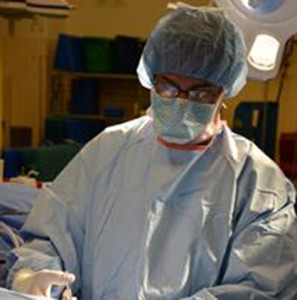What’s 3D Printing Got to do with Veterinary Surgery?
 Australian Veterinary Association
Australian Veterinary Association
Advances in technology such as 3D printing have led to significant changes in the way surgical procedures are now performed on pets.
Dr Christopher Tan from the University of Sydney will be speaking at a small animal veterinary conference next week about how veterinarians are using technology to reduce the impact that traditional open surgery has on Australian cats and dogs.
A relatively new technology used in veterinary science is 3D printing. It has been used both in clinical practice and in teaching situations.
“In the treatment of complex fractures, veterinarians can print and use 3D models to construct a detailed preoperative plan. Many programs even allow the surgeon to perform ‘virtual surgery’, cutting, moving and opposing the various bone fragments. The potential it has in terms of improving preoperative planning and surgical precision is really quite incredible. It can even be used for the production of customized surgical implants such as bone plates and interbody spacers.”
“We know that full open surgery is hard on our patients. The surrounding tissue is heavily affected, anaesthetic requirements are high and the recovery time can be long. Thanks to modern technology, we are now able to perform minimally invasive surgery for a range of small animal procedures including lung and liver lobectomies, biopsies and desexing.”
“Even in cases where open surgery is essential – for example in spinal and joint surgery – minimally invasive procedures that utilize magnification still have a role to play in improving visualization and accuracy during the open surgery.”
There have also been advances in the area of minimally invasive surgery with fluoroscopy being a key development. It allows veterinarians to view a body part and its motion on screen – it’s like watching a movie of the surgical site. This has led to significant improvements in fracture repair as well as cases where the pelvis has been dislocated, for example after a dog has been hit by a car.
The ASAVA conference (presented by the Australian Veterinary Association) will be held at the Gold Coast Convention and Exhibition Centre, 7-11 August 2016.










